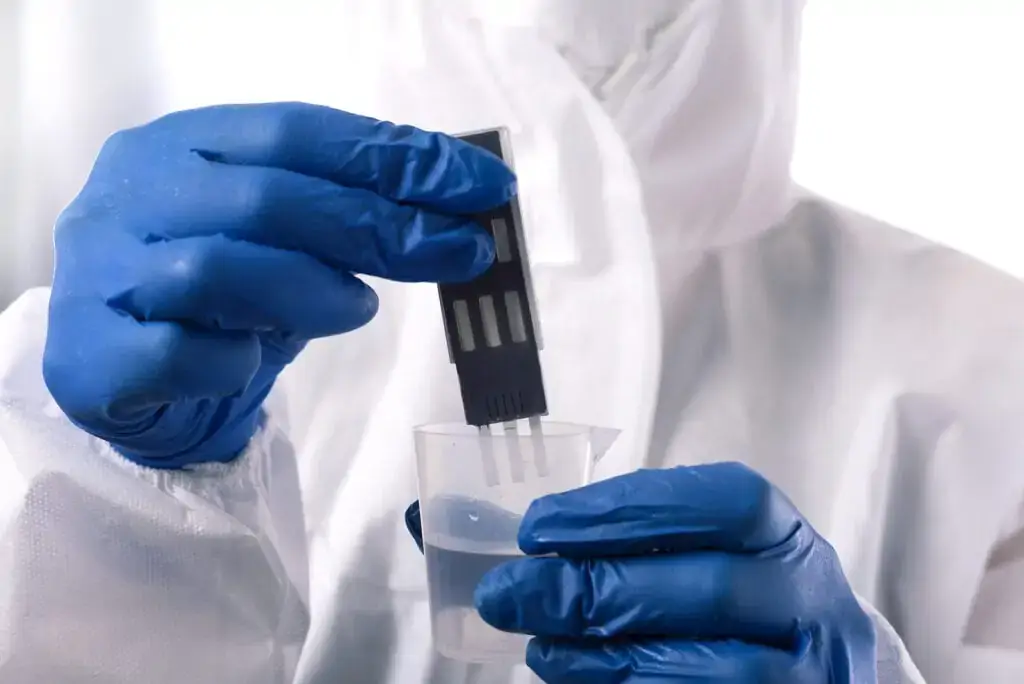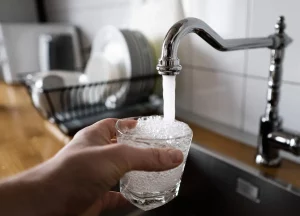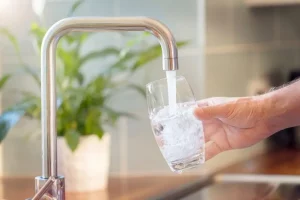In-Home Water Testing
Home water testing kits allow you to test your water at home and determine its content in just five minutes, depending on which brand and type. Although the testing categories can vary from one brand to another, you will usually get results that relate to the following water quality attributes.
1. High Content of Chlorine
Because chlorine is inexpensive, readily available, easy to use, and effective at killing germs, water treatment plants use it to disinfect water. Because of its high toxicity, chlorine is a strong chemical that can kill bacteria, microbes and pathogens. The chemical makes water safe by killing disease-causing bacteria.
Although chlorine is generally safe, high levels of chlorine can cause water to taste and smell bad, especially if it is not near a treatment facility. The chlorine can react with organic compounds in the water to create harmful disinfection byproducts. Some of these chlorine byproducts have been shown to cause stillbirths, congenital disability, increased risk of liver and kidney cancers, as well as issues with the central nervous and heart systems, kidneys, liver, kidneys and liver.
A water test can help you determine the chlorine levels in your water and allow you to take steps to lower it.
2. Water hardness
A water test can also reveal high levels of hardness in drinking water. Water hardness refers to the level of calcium and magnesium in the water. These hardness minerals can cause white chalky deposits around pipes, toilets, faucets and sinks. It looks just as bad as it sounds.
Even with the finest shampoos and soaps, it can take longer to make a lather with hard water. It creates a soapy lather instead of foaming. This leaves soap scum on your skin and hair as well as on the walls and doors of your bathroom. Hard water can cause streaks on dishes, and it can also impact the efficiency and longevity your water heater and other water-using appliances.
3. Water Alkalinity or Acidity
A home water test can be used to determine the pH level of your water. This is a measurement of how acidic or base your water is. A pH below seven indicates that your water is acidic. If this happens, the water “eats away at” your plumbing as it travels to faucets. This can cause copper pipes and fixtures to become thin and more susceptible to leaks. The metallic strips that have been leached from your pipes are brought along by the acidic water as it travels. Once the water flow stops, or evaporates, the metal strips are left behind, forming blue-green or even rust stains on plumbing fixtures, drains and bathtubs. The problem is worse for homes that have galvanized steel pipes or cast-iron pipes, as well as “sensitive” surfaces. Acidic water can also taste metallic, similar to the water you used as a child from the tap.
Water with a pH greater than seven is considered alkaline (or basic). Water with a pH level greater than seven is considered acidic (or basic). As such, it carries a lot of minerals and impurities that are offloaded as it travels through the plumbing. Scale buildup can occur in pipes and appliances that use water, limiting the flow of water into your home.
Alkaline water can cause hard water-like deposits that can cause more problems to your plumbing and appliances that use water. This will cause whitish scale deposits to your dishes, utensils and tubs and can block your pipes. Your pipes can lose their pressure over time. Devices (such as electric water heaters), may become less efficient and burn out. Showerheads can also become clogged with scaley residue. High pH levels can make water taste bitter, especially when it is used to make your morning cup of coffee. This can make it difficult to lather soaps and detergents.
4. Exceeding Iron Content
Testing for iron can be very beneficial to well-users. Although there is no evidence to suggest that iron-contaminated water is dangerous for your health, it can cause havoc in your home. Iron in excess can cause a metallic taste and odor to your water. It can also leave unpleasant stains on dishes, laundry, plumbing fixtures, and other surfaces. Iron can also encourage the growth of iron bacteria, and other types. Iron bacteria could also be present in your water if there is dark-colored, reddish or brown slime around your toilet tank, sinks, and bathtubs. This slime can also block pipes and cause a foul-smelling odor.
5. Hydrogen Sulfide
You might think your drinking water smells like rotten egg if it is. Water can sometimes build up hydrogen sulfide chemical gas, which causes a terrible rotten egg smell. This gas is found mainly in groundwater and well water. It is usually produced by sulfur bacteria, chemical reactions in water heaters, soil and rock, polluting, or decay. It is a good idea for well water to test for hydrogen sulfuride.
6. Low/High TDS Level
TDS is shorthand for Total Dissolved Solids. It measures the total amount of organic and inorganic compounds that are dissolved in water. It also includes any substances found in water that are not pure H2O molecules.
TDS levels above 100 are considered unsafe for drinking water. They can lead to various illnesses such as nausea, lung irritation, vomiting, dizziness, and other health problems. Consuming water with a high TDS level for longer periods of time can expose your body to chemicals and toxins. It can also lead to chronic conditions such as cancer, liver disease, kidney failures, nervous disorders, weaken immunity and congenital disabilities in newborns.











